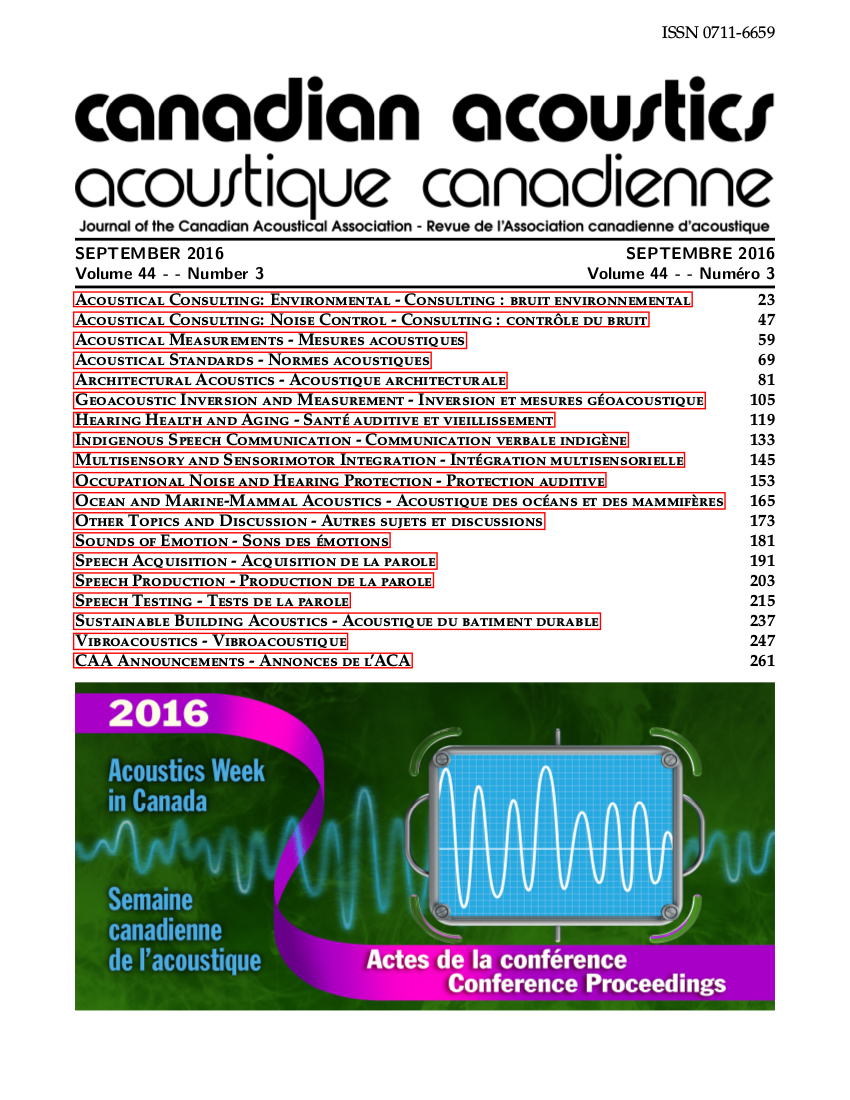An ecological approach to assess auditory perception.
Abstract
First project: Improvement in auditory perception is a major objective of therapeutic interventions for the hearing impaired. Numerous tests are proposed to guide these interventions and assess their benefits. Optimally, these tests should explore complex abilities such as those encountered by hearing impaired people in daily life.
The AzBio was developed to (1) provide an unbiased evaluation of individuals with extensive exposure to traditional sentence materials, (2) allow for evaluation of performance in a large number of conditions, (3) create lists of sentences with similar levels of difficulty for within-subject comparisons, and (4) provide an estimate of performance that was consistent with the patient’s perception of their performance in everyday listening environments (Spahr et al., 2012). Since its introduction, the AzBio has largely been diffused among English speaking cochlear implant teams, especially because of the high complexity of the material that prevents the ceiling effect observed with the use of common clinical materials when assessing contemporary devices. Such material is also highly desirable for assessing cochlear implant users in other languages. Thus, the first part of this project aims to develop and normalise an international French version of the test.
Methods: Similarly to the original version, the initial French AzBio sentence corpus includes 1000 sentences based on up-to-date, adult topics and current social ideas. The corpus was generated through inputs from collaborators from different regions of France and Canada; the final list constitutes a consensus on the familiarity of the lexicon in all regions. This corpus was recorded with two female and two male talkers known for their intelligibility despite any regional accent. The final test construction process will then follow the same steps used for the original test, that is 1) the mean intelligibility rating for each sentence will be estimated by processing each sentence through a five-channel CI simulation and calculating the mean percent correct score achieved by 15 normal-hearing listeners, 2) sentences from each talker will be sorted by percent correct score, and 165 sentences will be selected from each talker and then sequentially assigned to 33 lists, each containing 20 sentences (5 sentences from each talker), and 3) list equivalency were validated by presenting all lists, in random order, to 30 normal hearing and hearing impaired persons. Normal-hearing and CI listeners will be recruited in equal numbers in participating regions of France and Canada.
Second project: Many contemporary tests, such as the AzBio, were designed on sentence recognition against a speech spectrum noise coming from fixed sources. While sentences appear as a realistic daily stimulus, one can argue that a speech spectrum noise issued from fixed positions with variable or arbitrarily predetermined signal to noise ratios can be far from real life. Yet, it is possible to create a more realistic test environment. The Immersion 360 system proposes a virtual environment that can reproduce any everyday sound experience and thus, support a more realistic testing condition to assess auditory perception. The second part of the project aims to specify the psychometrics of this system and define norms for speech perception for French speaking normal-hearing people.
Methods: Eighty young adults with normal hearing were assessed in Canada and in France with French adaptations of HINT or AzBio tests in 9 Immersion 360 virtual environments (car, garage, cafeteria, restaurant, ball game in a gymnasium, race training in a gymnasium, kindergarten, road traffic, street traffic). Presentation and signal to noise levels were set at the levels measured on the recording sites. Test-retest reliability was explored one month later with half of the cohort.
Results: The results of the validation study of the AzBio with normal hearing and hearing impaired participants will be presented. The content of the final equivalent lists will be shared.
Descriptive analysis will specify the average, variance and confidence intervals at 95% for each test condition of the Immersion 360 system using the HINT and the AzBio. Normative data will be derived from these metrics. The reliability analysis will also be presented.
Additional Files
Published
How to Cite
Issue
Section
License
Author Licensing Addendum
This Licensing Addendum ("Addendum") is entered into between the undersigned Author(s) and Canadian Acoustics journal published by the Canadian Acoustical Association (hereinafter referred to as the "Publisher"). The Author(s) and the Publisher agree as follows:
-
Retained Rights: The Author(s) retain(s) the following rights:
- The right to reproduce, distribute, and publicly display the Work on the Author's personal website or the website of the Author's institution.
- The right to use the Work in the Author's teaching activities and presentations.
- The right to include the Work in a compilation for the Author's personal use, not for sale.
-
Grant of License: The Author(s) grant(s) to the Publisher a worldwide exclusive license to publish, reproduce, distribute, and display the Work in Canadian Acoustics and any other formats and media deemed appropriate by the Publisher.
-
Attribution: The Publisher agrees to include proper attribution to the Author(s) in all publications and reproductions of the Work.
-
No Conflict: This Addendum is intended to be in harmony with, and not in conflict with, the terms and conditions of the original agreement entered into between the Author(s) and the Publisher.
-
Copyright Clause: Copyright on articles is held by the Author(s). The corresponding Author has the right to grant on behalf of all Authors and does grant on behalf of all Authors, a worldwide exclusive license to the Publisher and its licensees in perpetuity, in all forms, formats, and media (whether known now or created in the future), including but not limited to the rights to publish, reproduce, distribute, display, store, translate, create adaptations, reprints, include within collections, and create summaries, extracts, and/or abstracts of the Contribution.


